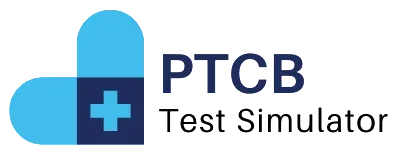CNA Test Practice 3
The CNA Chemistry practice test is an essential resource for nursing students as they prepare for their licensure examinations and professional careers. Chemistry, a fundamental science that explores the properties and interactions of matter, is crucial in understanding the biochemical processes that underline health and disease.
As healthcare professionals, nurses must be equipped with a solid understanding of chemistry to provide safe and effective patient care. This essay discusses the significance of the CNA Chemistry practice test, its structure, benefits, and strategies for effective use.
The Role of Chemistry in Nursing
Chemistry is pivotal in nursing education, as it forms the basis for understanding pharmacology, biochemistry, and physiology. Nurses must comprehend how medications interact with the body, the chemical composition of various substances, and the biochemical pathways involved in metabolic processes. Knowledge of chemistry enables nurses to make informed decisions about medication administration, patient education, and the management of various health conditions.
As nursing programs increasingly emphasize the importance of standardized testing, mastering chemistry concepts becomes essential. The CNA Chemistry practice test provides an opportunity for students to reinforce their knowledge and gain confidence in their understanding of chemical principles.
Structure of the HESI Chemistry Practice Test
The CNA Chemistry practice test is designed to reflect the format and content of the actual CNA exams, which nursing students must pass to obtain their licensure. Typically, the practice test consists of multiple-choice questions that cover a broad range of topics, including:
- Atomic Structure: Understanding the components of atoms, including protons, neutrons, and electrons, and how they interact.
- Chemical Bonds: Exploring ionic and covalent bonding, molecular structures, and the properties of different compounds.
- Stoichiometry: The quantitative relationships between reactants and products in chemical reactions.
- Acids and Bases: Understanding pH, the properties of acids and bases, and their roles in biological systems.
- Thermodynamics: Basic concepts related to energy changes in chemical reactions and the laws governing these processes.
Benefits of Using the HESI Chemistry Practice Test
- Self-Assessment: The CNA Chemistry practice test serves as a valuable self-assessment tool. By evaluating their performance, students can identify their strengths and weaknesses, allowing for targeted study efforts. This focused approach helps maximize the effectiveness of their preparation.
- Familiarity with Test Format: Engaging with practice tests helps students become accustomed to the structure and timing of the CNA exam. This familiarity can significantly reduce anxiety and improve performance, as students feel more prepared on exam day.
- Reinforcement of Concepts: Taking practice tests reinforces essential chemistry concepts. The process of recalling information in a test setting strengthens memory retention, making it easier for students to apply their knowledge in both exams and clinical practice.
- Development of Critical Thinking Skills: Many questions in the CNA Chemistry practice test require students to apply their knowledge to real-world scenarios. This focus on critical thinking is vital in nursing, where clinical judgment and decision-making are paramount.
- Building Confidence: Completing practice tests can boost a student’s confidence. As students become more familiar with the material and the testing format, they are likely to approach the actual exam with a more positive mindset, ultimately improving their performance.
Strategies for Effective Use of the CNA Chemistry Practice Test
- Regular Practice: Incorporating practice tests into a consistent study routine enhances retention and understanding of chemistry concepts. Regular exposure to different question types helps solidify knowledge over time.
- Review Incorrect Answers: After completing a practice test, students should thoroughly review any mistakes. Understanding why a particular answer was incorrect can provide valuable insights and prevent similar errors in the future.
- Utilize Supplementary Resources: Combining practice tests with other study materials, such as textbooks, online resources, and study groups, can provide a more comprehensive understanding of the subject matter.
- Simulate Test Conditions: Taking practice tests under timed conditions can help students acclimate to the pressure of actual exams. This practice fosters time management skills and reduces anxiety during the real test.
Conclusion
The CNA Chemistry practice test is an indispensable tool for nursing students seeking to master the chemical concepts that are essential for their future careers. By providing a structured approach to assessment and reinforcing key knowledge, these practice tests significantly enhance students’ preparedness for licensure examinations and clinical practice. As the healthcare landscape continues to evolve, a solid understanding of chemistry is increasingly critical for safe and effective patient care. By embracing the CNA Chemistry practice test as part of a comprehensive study plan, students can improve their academic performance, build confidence, and ultimately excel in their nursing education and future professional endeavors.


